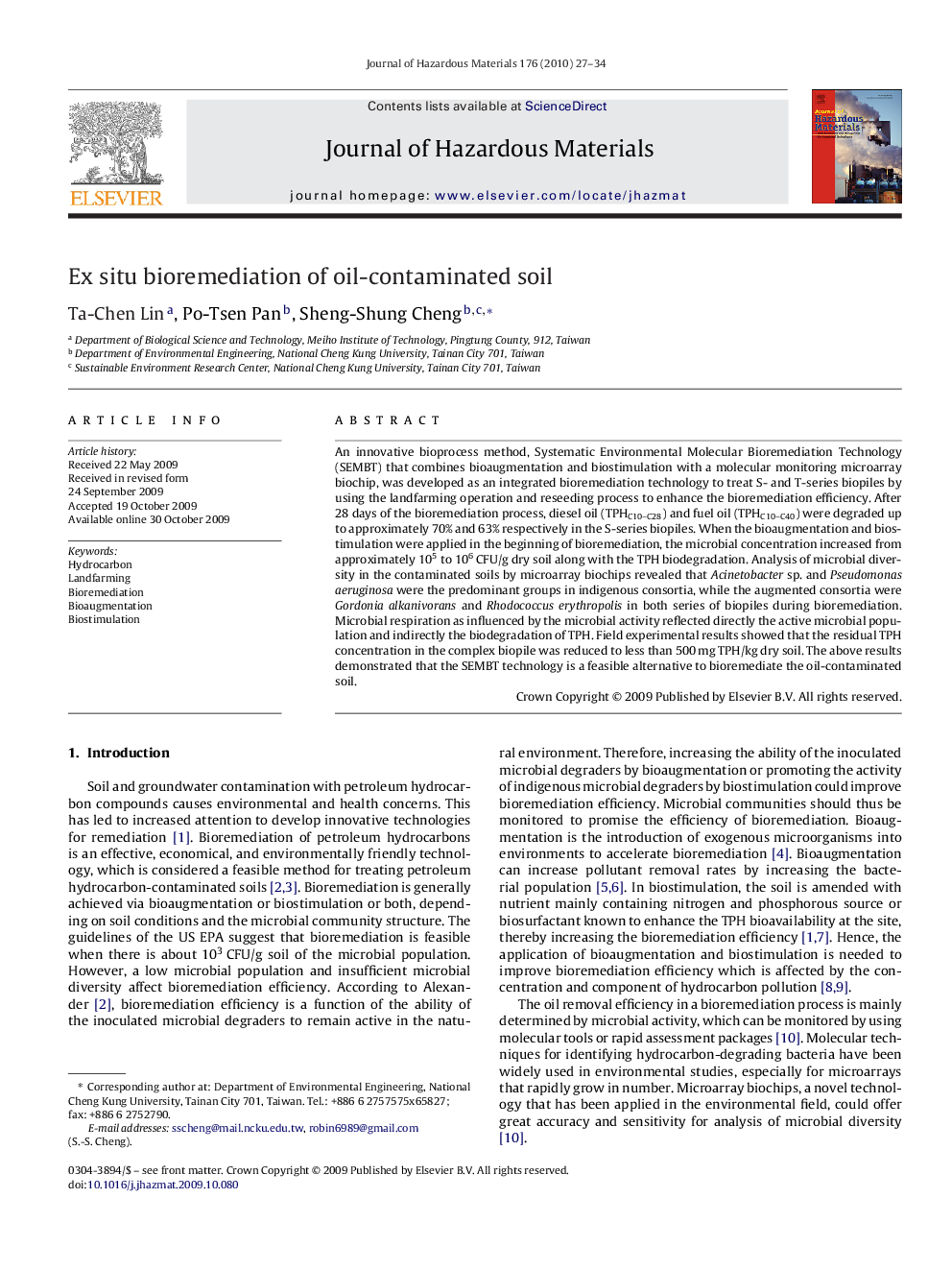| کد مقاله | کد نشریه | سال انتشار | مقاله انگلیسی | نسخه تمام متن |
|---|---|---|---|---|
| 580530 | 1453152 | 2010 | 8 صفحه PDF | دانلود رایگان |
عنوان انگلیسی مقاله ISI
Ex situ bioremediation of oil-contaminated soil
دانلود مقاله + سفارش ترجمه
دانلود مقاله ISI انگلیسی
رایگان برای ایرانیان
کلمات کلیدی
موضوعات مرتبط
مهندسی و علوم پایه
مهندسی شیمی
بهداشت و امنیت شیمی
پیش نمایش صفحه اول مقاله

چکیده انگلیسی
An innovative bioprocess method, Systematic Environmental Molecular Bioremediation Technology (SEMBT) that combines bioaugmentation and biostimulation with a molecular monitoring microarray biochip, was developed as an integrated bioremediation technology to treat S- and T-series biopiles by using the landfarming operation and reseeding process to enhance the bioremediation efficiency. After 28 days of the bioremediation process, diesel oil (TPHC10-C28) and fuel oil (TPHC10-C40) were degraded up to approximately 70% and 63% respectively in the S-series biopiles. When the bioaugmentation and biostimulation were applied in the beginning of bioremediation, the microbial concentration increased from approximately 105 to 106Â CFU/g dry soil along with the TPH biodegradation. Analysis of microbial diversity in the contaminated soils by microarray biochips revealed that Acinetobacter sp. and Pseudomonas aeruginosa were the predominant groups in indigenous consortia, while the augmented consortia were Gordonia alkanivorans and Rhodococcus erythropolis in both series of biopiles during bioremediation. Microbial respiration as influenced by the microbial activity reflected directly the active microbial population and indirectly the biodegradation of TPH. Field experimental results showed that the residual TPH concentration in the complex biopile was reduced to less than 500Â mg TPH/kg dry soil. The above results demonstrated that the SEMBT technology is a feasible alternative to bioremediate the oil-contaminated soil.
ناشر
Database: Elsevier - ScienceDirect (ساینس دایرکت)
Journal: Journal of Hazardous Materials - Volume 176, Issues 1â3, 15 April 2010, Pages 27-34
Journal: Journal of Hazardous Materials - Volume 176, Issues 1â3, 15 April 2010, Pages 27-34
نویسندگان
Ta-Chen Lin, Po-Tsen Pan, Sheng-Shung Cheng,